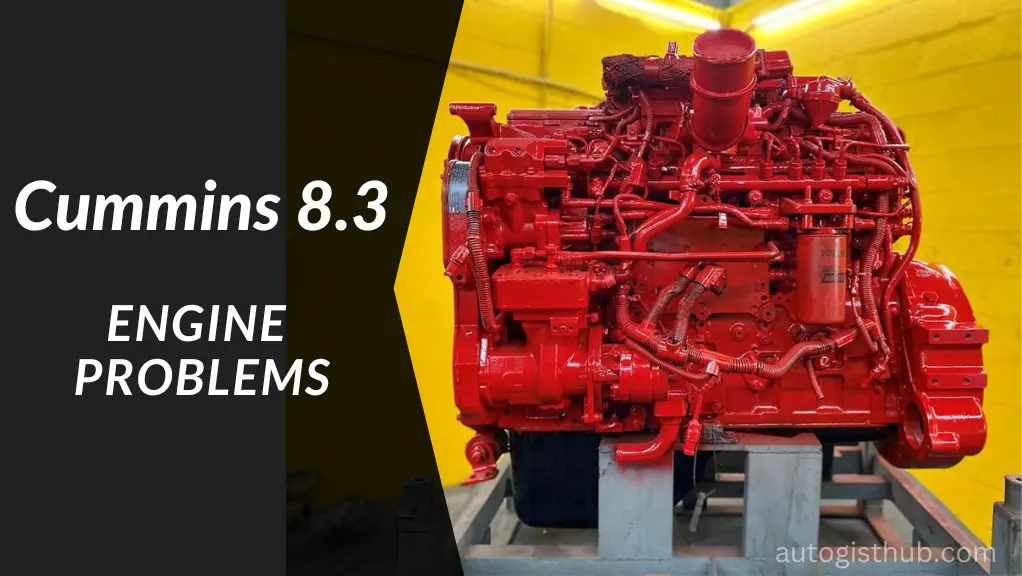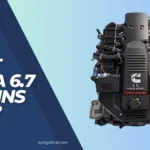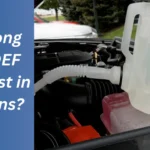Cummins 8.3 engine problems include potential fuel injector failures and oil leaks. The Cummins 8.3 engine, while powerful and reliable, can encounter a few common issues.
One problem that owners should be aware of is the potential for fuel injector failures, which can lead to rough idling, reduced power, and decreased fuel efficiency. Another issue to watch out for is oil leaks, which can occur at various points in the engine, including the valve cover gasket and oil cooler.
These leaks can result in decreased oil levels and potential engine damage if not addressed promptly. It’s important for owners of Cummins 8. 3 engines to regularly inspect their vehicles and address these issues to ensure optimal performance and longevity.
Common Issues With Cummins 8.3 Engines
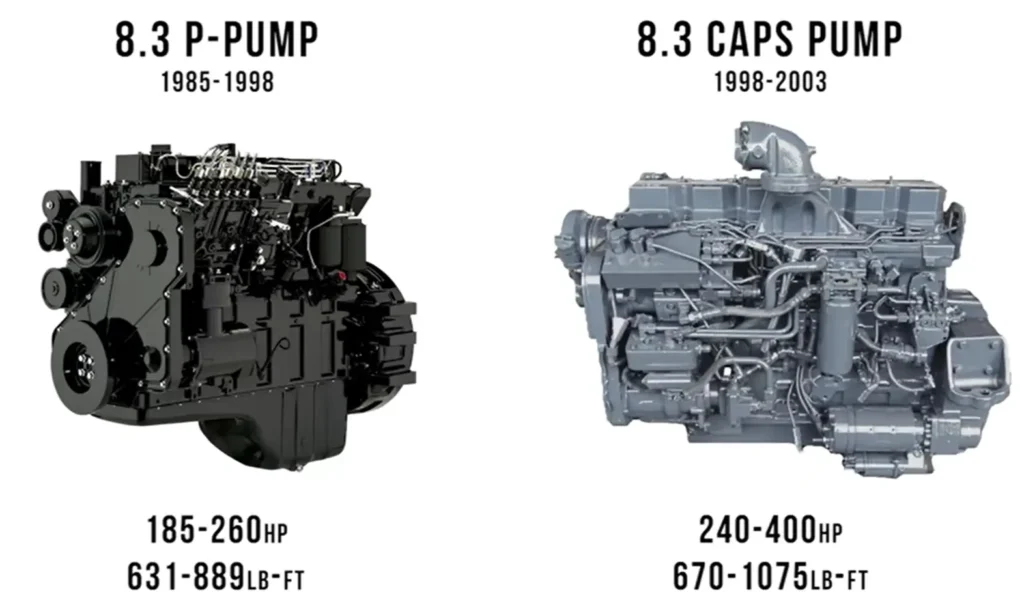
Overheating
One common issue that Cummins 8.3 engines may face is overheating. Overheating can occur due to various reasons, such as a malfunctioning cooling system or insufficient coolant.
When the engine overheats, it can result in severe damage to key components and even lead to the engine seizing up altogether. It’s crucial to address any overheating issues promptly to prevent further damage and ensure the longevity of the engine.
Low Oil Pressure
Another issue that owners of Cummins 8.3 engines may encounter is low oil pressure. Low oil pressure can be caused by several factors, including a faulty oil pump or a leak in the oil system.
If left unattended, low oil pressure can lead to inadequate lubrication, which can result in excessive wear and tear on engine components and potential engine failure. Regularly monitoring the oil pressure and addressing any low pressure issues is essential for maintaining the health of your Cummins 8.3 engine.
Excessive Exhaust Smoke
Excessive exhaust smoke is another common problem that Cummins 8.3 engines may experience. This issue can occur due to various reasons, such as worn-out piston rings, damaged cylinder walls, or faulty fuel injectors.
Excessive smoke not only indicates potential engine problems but can also cause environmental concerns. It’s crucial to identify the root cause of the excessive exhaust smoke and have it promptly resolved to ensure optimal engine performance and reduce pollution.
Fuel Efficiency Problems
Cummins 8.3 engines might also face fuel efficiency problems, leading to increased fuel consumption. This can be attributed to factors such as clogged fuel injectors, a malfunctioning fuel pump, or a faulty engine control module. Reduced fuel efficiency not only affects your operating costs but also indicates potential engine issues.
Regular maintenance and addressing fuel efficiency problems promptly can help optimize fuel consumption and ensure the longevity of your Cummins 8.3 engine.
Troubleshooting Tips For Overheating
Experiencing overheating issues with your Cummins 8.3 engine can be frustrating, leading to potential damage if not addressed promptly. To prevent further complications, it is essential to troubleshoot and identify the root cause of the problem. Luckily, there are several troubleshooting tips you can follow to diagnose and resolve overheating issues effectively.
Check Coolant Levels
One of the first steps in troubleshooting an overheating Cummins 8.3 engine is to check the coolant levels. Low coolant levels can result in insufficient cooling, causing the engine to overheat. To verify the coolant levels:
- Ensure the engine is off and cool before opening the radiator cap.
- Carefully remove the radiator cap to avoid any splashing or hot coolant.
- Inspect the coolant level and top it up if necessary, using the recommended coolant for your engine.
- Once filled, secure the radiator cap tightly.
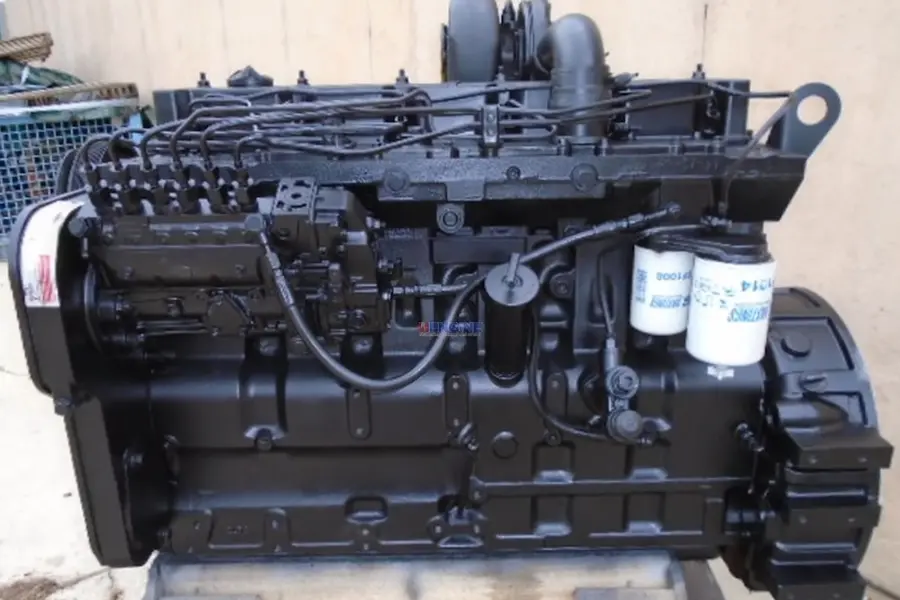
Inspect the Radiator and Cooling Fan
The radiator and cooling fan play a crucial role in maintaining the engine’s temperature. Any issues with these components can lead to overheating. To inspect the radiator and cooling fan:
- Visually examine the radiator for any signs of damage, such as cracks or leaks.
- Ensure the radiator is clean and free from any debris or obstructions that could impede proper airflow.
- Inspect the cooling fan for any damage or loose connections.
- Ensure the fan blades are intact and not obstructed by dirt or debris.
Verify Thermostat Functionality
The thermostat regulates the engine’s temperature by controlling the flow of coolant. A malfunctioning thermostat can cause overheating issues. Here’s how to verify its functionality:
- Locate the thermostat housing, usually near the engine’s upper radiator hose.
- Carefully remove the housing and inspect the thermostat.
- Ensure the thermostat valve opens and closes smoothly, allowing the proper flow of coolant.
- If the thermostat is faulty, consider replacing it with a new one.
Clean or Replace Clogged Cooling System Components
Clogged cooling system components can restrict the flow of coolant, leading to overheating. It is crucial to clean or replace these components regularly. Here’s how:
- Inspect the radiator, hoses, and water pump for any signs of blockages.
- If clogged, carefully clean the components using an appropriate coolant system cleaner and a soft brush.
- If cleaning does not resolve the issue, consider replacing the clogged components with new ones to ensure optimal cooling.
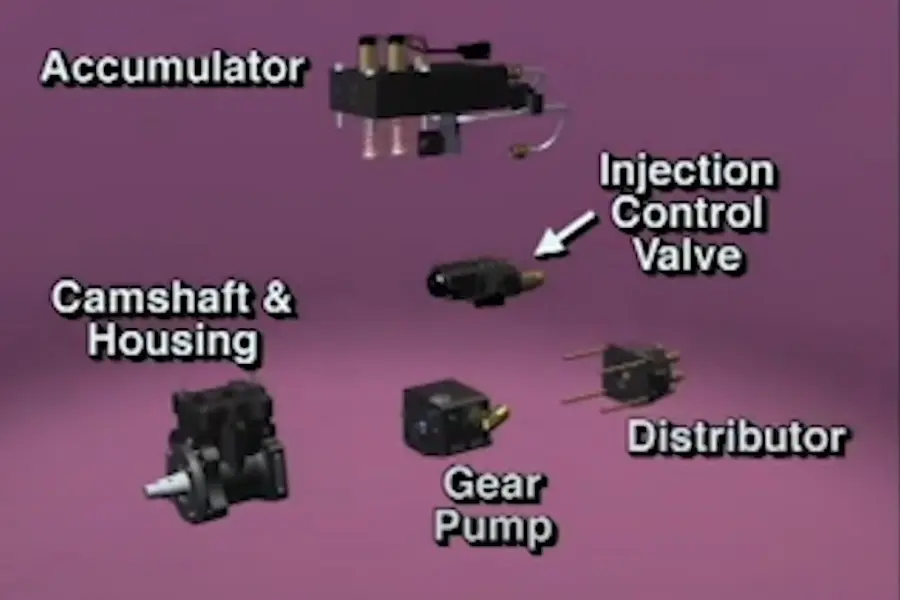
By following these troubleshooting tips, you can effectively diagnose and resolve overheating problems with your Cummins 8.3 engine. However, if the issue persists or you are uncertain about performing these steps yourself, it is advisable to consult a professional mechanic to avoid further damage.
Solutions For Low Oil Pressure
Low oil pressure in a Cummins 8.3 engine can be a cause for concern as it can lead to serious damage if not addressed promptly. Fortunately, there are several solutions you can try before resorting to expensive repairs or replacements. In this article, we will explore some effective ways to tackle low oil pressure in your Cummins 8.3 engine.
Check Oil Levels and Quality
One of the first steps you should take when troubleshooting low oil pressure is to check the oil levels and quality. Lack of sufficient oil or oil that is old and contaminated can contribute to low oil pressure. Here’s what you can do to ensure your oil is up to par:
- Regularly check the oil dipstick to monitor oil levels. If the levels are below the recommended range, it’s essential to top up the oil immediately.
- Inspect the oil for any signs of contamination, such as a milky appearance, strong odor, or gritty texture. If you notice any of these signs, it’s best to have the oil changed.
Inspect the Oil Filter and Pump
Another common cause of low oil pressure is a clogged or damaged oil filter. A dirty or inefficient filter can restrict the flow of oil, resulting in inadequate pressure. To address this issue:
- Locate the oil filter and carefully inspect it for any signs of blockage or damage. If the filter appears dirty or is damaged, it’s crucial to replace it with a new one. Regularly changing the oil filter as per manufacturer recommendations can help prevent low oil pressure problems.
- Additionally, consider inspecting the oil pump for any signs of malfunction or wear. A faulty oil pump can also contribute to low oil pressure. If you suspect an issue with the pump, it’s advisable to seek professional assistance to determine if it needs repair or replacement.
Address Potential Oil Leaks
Leaking oil can significantly impact oil pressure in your Cummins 8.3 engine. It’s important to tackle any oil leaks promptly to maintain proper pressure levels. Here are a few steps you can take to address potential oil leaks:
- Inspect the engine for any visible signs of oil leakage, such as puddles or wet spots around the engine components. If you identify any leaks, it’s crucial to identify the source and have it repaired as soon as possible.
- Common areas where oil leaks may occur include gaskets, seals, and connections. Carefully examine these areas for signs of damage or deterioration. Replace any worn-out gaskets or seals and tighten loose connections to prevent oil leakage.
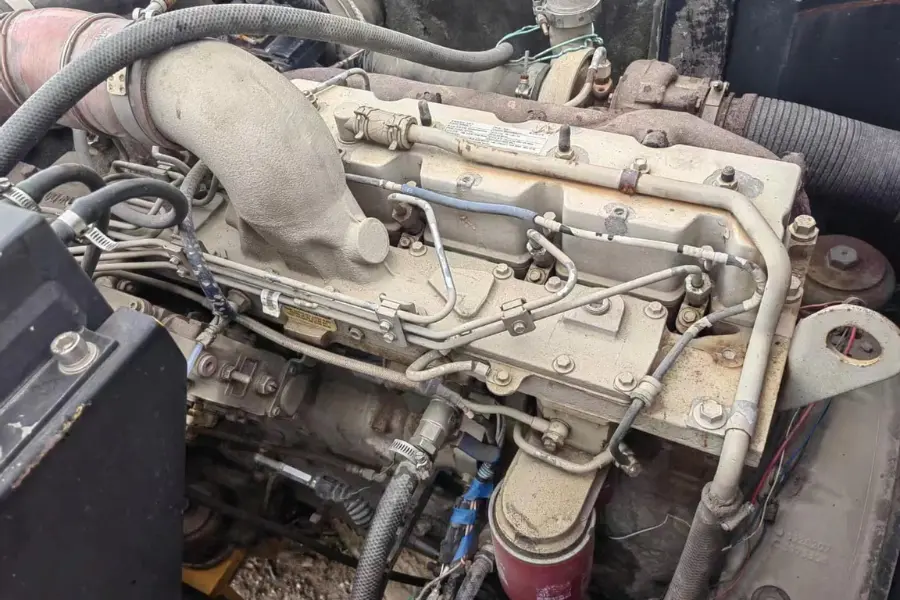
Consider Upgrading to a Higher Viscosity Oil
In some cases, low oil pressure may be due to the use of oil with a lower viscosity than required. Certain engine conditions may benefit from a higher viscosity oil, which can help maintain optimal pressure levels. Consider the following:
- Consult your Cummins 8.3 engine manual or contact a qualified technician to determine the recommended viscosity for your engine.
- If your engine’s requirements allow for it, upgrade to a higher viscosity oil to see if it improves oil pressure. However, it’s vital to ensure compatibility with your engine’s specifications before making any changes.
By following these solutions for low oil pressure, you can help maintain the optimal functioning of your Cummins 8.3 engine and avoid potential damage. Remember to consult your engine manual or seek professional advice if you encounter persistent low oil pressure issues.
Fixing Excessive Exhaust Smoke
Excessive exhaust smoke from your Cummins 8.3 engine can be a concerning issue that requires immediate attention. Thankfully, there are several potential causes for this problem, and understanding how to diagnose and fix them can help you get your engine running smoothly again. In this post, we will explore the different steps you can take to address excessive exhaust smoke.
Diagnose the Color of the Smoke
Before you can effectively address excessive exhaust smoke, it’s crucial to determine the color of the smoke and what it indicates. Different colors of smoke can point to specific issues within your engine. Here are the most common colors and their potential causes:
| Smoke Color | Potential Causes |
|---|---|
| Black |
|
| Blue |
|
| White |
|
Inspect or Replace the Turbocharger
If black smoke is the culprit behind your excessive exhaust smoke, it’s essential to inspect or potentially replace the turbocharger. The turbocharger plays a crucial role in delivering an optimal air-fuel mixture to the engine.
If it becomes clogged or damaged, it can result in a rich fuel mixture, leading to black smoke. Inspecting the turbocharger for any signs of wear, damage, or blockages is critical. If necessary, replacing the turbocharger can help resolve the issue.

Address Issues with Fuel Injectors
Malfunctioning or clogged fuel injectors can also contribute to excessive exhaust smoke, particularly if the smoke appears black. To address this problem, inspect the fuel injectors for any signs of damage, such as leakage or blockages. If the injectors are faulty, cleaning or replacing them is necessary to ensure the proper fuel-air mixture is achieved, reducing smoke emissions.
Clean or Replace Clogged EGR Valve
A clogged Exhaust Gas Recirculation (EGR) valve is often responsible for black smoke emissions. The EGR valve helps reduce emissions by recirculating exhaust gases back into the engine, but if it becomes clogged with carbon deposits, it can lead to an improper air-fuel mixture. Cleaning the EGR valve thoroughly can sometimes resolve the issue. If cleaning doesn’t improve the situation, replacing the valve may be necessary.
By diagnosing the color of the smoke and addressing the specific components responsible, you can effectively tackle excessive exhaust smoke issues with your Cummins 8.3 engine. Remember to perform regular inspections, clean or replace parts as needed, and consult with a professional technician if necessary. With the right approach, you can enjoy a well-functioning and smoke-free engine.
Improving Fuel Efficiency
When it comes to the Cummins 8.3 engine, fuel efficiency is a crucial aspect that can have a significant impact on both performance and cost-effectiveness. By implementing a few key strategies, you can enhance the fuel efficiency of your Cummins 8.3 engine and make the most out of every drop of diesel. In this section, we will explore some effective methods to improve fuel efficiency:
Regular Maintenance and Service
Regular maintenance and service play a vital role in keeping your Cummins 8.3 engine in top-notch condition. By adhering to a consistent maintenance schedule, you can ensure that all components are functioning optimally, minimizing fuel consumption and maximizing efficiency. It is essential to follow the manufacturer’s guidelines and recommendations for routine inspections, filter replacements, and fluid changes.
Address Fuel System Leaks
Fuel system leaks can significantly hamper the efficiency of your Cummins 8.3 engine. Leaks not only result in fuel wastage but can also lead to potential engine damage if left unattended. Hence, it is crucial to address any fuel system leaks promptly.
Regularly inspect the fuel lines, connections, and injectors for potential leaks or signs of contamination. Any detected issues should be addressed and repaired accordingly to maintain optimal fuel efficiency.
Upgrade to More Efficient Fuel Injectors
Fuel injectors are responsible for delivering fuel into the engine’s combustion chambers. Upgrading to more efficient fuel injectors can enhance the atomization of fuel, resulting in improved combustion and fuel efficiency.
Consider consulting with a qualified technician or diesel performance expert to determine the most suitable fuel injectors for your Cummins 8.3 engine. This simple upgrade can have a significant impact on fuel economy.
Optimize Driving Habits and Reduce Idle Time
Optimizing driving habits and reducing idle time are effective ways to maximize fuel efficiency. Avoid unnecessary idling, as idling not only wastes fuel but also increases engine wear and tear.
Additionally, adopting fuel-efficient driving techniques such as gradual acceleration, maintaining a consistent speed, and avoiding rapid braking can greatly improve your Cummins 8.3 engine’s fuel efficiency. By consciously practicing these habits, you can go the extra mile while also reducing your environmental footprint.
FAQs On Cummins 8.3 Engine Problems
To troubleshoot common Cummins 8. 3 engine problems, perform regular maintenance, check fuel system, and monitor coolant levels.
Signs of a failing Cummins 8. 3 engine include excessive smoke, loss of power, abnormal fuel consumption, and unusual engine noises.
To prevent Cummins 8. 3 engine problems, ensure proper lubrication, use quality fuel and filters, and avoid overloading and overheating the engine.
Conclusion
In a nutshell, the Cummins 8. 3 engine does have its fair share of problems. From issues with the fuel system to potential cooling system malfunctions, it’s important for owners to be aware of the potential challenges they may face.
However, with proper maintenance and regular inspections, these problems can be minimized, ensuring optimal performance and longevity for the engine. So, stay proactive and tackle any potential concerns head-on to keep your Cummins 8. 3 engine running smoothly for years to come.
